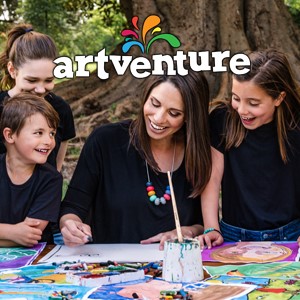We are lucky to have two amazing Adelaide based CranioSacral Therapy physiotherapists, Shelley and Erin, blogging for us, and we welcome them to the Kids in Adelaide team! We are making a big effort to link our Kids in Adelaide community with the best professionals in Adelaide. Shelley and Erin are highly knowledgeable and have loads of great information, tips and techniques for helping babies, toddlers and beyond. CST is a really gentle form of physio and I’ve seen first hand how it can help babies, with Shelley helping our second daughter with neck tightness when she was just 6 weeks old. To be honest, I didn’t realise Shelley had even started the therapy as she was just holding Spencer and cooing at her! Spencer was so happy looking up at Shelley and was much more settled after breastfeeds that afternoon and evening. Then she slept for 10 hours that night. Thank you, Shelley!
You can find these two Superwomen at Evolve Manual Therapy, a CranioSacral Therapy practice located in Rose Park, specialising in treating Adults, Children and Families. Read on for lots of info on how CST can help families….
CranioSacral Therapy- Babies, Toddlers and Beyond
Reflux, breastfeeding issues, delayed development; sleep issues and behavioural difficulties are just a few of the things we have dealt with in the 3.5 years since starting a family. The issues that can arise with children are endless but I have discovered a wonderful treatment modality that has helped us work through many of these problems.
CranioSacral Therapy (CST) is a gentle, non-invasive modality that seeks to find and treat restrictions throughout the body and help the CranioSacral system function at its best. This system is made up of the brain and spinal cord, fluid flowing around these structures and membranes creating the outer covering. This system has its own rhythm (the CranioSacral rhythm) that is different from your heart rate and breathing rate. A CranioSacral therapist will very gently put their hands on the body to feel for this rhythm (or the ‘lack’ of this rhythm) to find the ‘primary’ cause or ‘root cause’ of the issues in the body. The lack of rhythm and restrictions within the CranioSacral system can lead to tension patterns in the body that can have an effect on all bodily systems. This includes the musculoskeletal, endocrine, cardio-respiratory, gastrointestinal, lymphatic, immune and reproductive systems. Over time our bodies will compensate for these tension patterns in order to keep us functioning well. When our body can no longer compensate, symptoms occur.
Even the most natural of births can place tension on a newborn babies nervous system. During labour a newborn leaves their warm, safe, secure environment in utero and enters the bright, noisy, unfamiliar world. Sometimes it is necessary for some intervention, whether this be assistance from forceps or ventouse or a cesarean birth and this can contribute to little tension patterns within the newborn. Whatever the birth experience, CST can help a newborn baby recover and thrive in their life.
Here are a few of the common issues that occur in newborns, babies, toddlers or even an older child where CST can greatly improve and/or alleviate symptoms.
Reflux/Colic:
We have a nerve that goes to all of our organs (called the vagus nerve). This nerve comes out of the head just behind the ear. If we get tight or stuck in this area it can irritate or squeeze the nerve and create issues with the organs such as colic or reflux.
Feeding issues:
A babies’ sense of smell is an important part of their feeding, as is their “rooting” reflex (one of their primitive reflexes). Any tension patterns in the head can interrupt or alter these reflexes and contribute to feeding issues.
Assisted deliveries such as ventouse and forceps deliveries can increase tension in the babies’ membranes (the connective tissues that surrounds the brain and spinal cord). This can change the shape of a babies palate which can contribute to their ability to draw the nipple in or suck. It can also create tension under the tongue, again having affect on feeding.
Headshape:
Misshapen heads or “flat spots” are a relatively common occurrence in newborns. It can occur due to a little compression from forceps or a ventouse delivery. Other times it may be related to tensions in the pelvis or rib cage or a mild tightening in one side of the neck (called torticollis) causing the baby to favour lying on one side when sleeping or in the capsule. Head-shape issues can over time contribute to colic and reflux and mild delays in development.
One of Erin’s clients, Kerstin, has had great results using CST. Her testimonial says it all.
“I can’t stop recommending Erin Riley! My son Jamie had a traumatic birth and to top it off he was left with a lump the size of a small egg on the side of his head. After treatments ranging less than 8 months, the lump was almost completely gone; the rest as predicted by Erin, just needed time. Four years on, his head is a perfect shape. Above that it helped at the time with his sleeping patterns, temperament and reflux. I am so grateful for the patience, expertise and pure care that Erin had for Jamie through his treatment and beyond. She is an expert who has clearly found her calling in life. Can’t recommend her highly enough!”
Sleep:
Often newborns “catnap” and don’t seem to sleep for long periods of time or their sleep/wake cycles seem out of balance with day/night! CST can help babies find an equilibrium with their sleep cycles by helping their nervous systems calm down.
Behaviour:
The bones in our heads (the cranial bones) can often become restricted and tight. This might feel like there is a tight band around our head, similar to the feeling of wearing a headband that is too tight and it gives us a headache. When the cranial bones are tight we can feel irritable, have difficulty concentrating and generally feel a bit ‘off’. This is the same in babies, toddlers and older children.
General Development/Gross Motor Skills:
Our nervous systems are integral to our ability to learn and develop new skills. In babies these are things such as learning to roll, sit, crawl, talk and walk. If our nervous system is tight or restricted a lot of energy goes into maintaining those restrictions rather than on developing new pathways for skill development. CST can assist in these developmental processes.
For example, my own son William was nearly 2 and hardly talking. People kept saying, boys talk later than girls but I still figured CST was worth a try. My husband noticed the difference after our very first visit and then after 3 visits he was stringing 2-3 words together- and now we can’t shut him up! I know from experience with my own children that CST is a gentle technique that has brought health and happiness to our family.
Historically, CranioSacral therapy stems from an Osteopathic lineage dating back to the late 1800’s. American Osteopath, Dr John E. Upledger is the modern developer of the work and was the one to coin the term “CranioSacral Therapy”. This modality as it is practiced now developed out of Dr Upledger’s groundbreaking research at Michigan State University back in the 70’s. It can be used as a treatment modality by registered manual therapists such as Physiotherapists and massage practitioners.
Stay tuned for part 2 where we talk about CranioSacral for pregnancy, birth and postnatal issues!
Shelley Clarke- B. Physiotherapy
Shelley is a Mum of two small children, William and Isla. She has worked as a physiotherpaist for over 10 years in Australia and Canada, including a stint at Women’s and Children’s Hospital in Adelaide. She is passionate about helping other Mums and Dads work through the puzzle of parenthood, supporting and caring for their children and family through CranioSacral Therapy.
Erin Riley- B. Physiotherapy, CST-D, Director Evolve Manual Therapy
Erin grew up with two teachers for parents, and she has been surrounded by children from a young age. Starting out teaching swimming, she moved into aquatic thearpy for children then Physiotherapy and now works as a Specialist CranioSacral Therapist and International Lecturer for the Upledger Institute. She is passionate about helping children thrive and fulfil their potential through CranioSacral Therapy.

More information:
https://www.evolvemanualtherapy.com.au/
https://www.facebook.com/evolvemt/
https://www.upledger.com
Phone: +61 406 249 221
Email: contact@evolvemanualtherapy.com.au
Visit: 18 Kensington Rd, Rose Park, SA, 5067

























